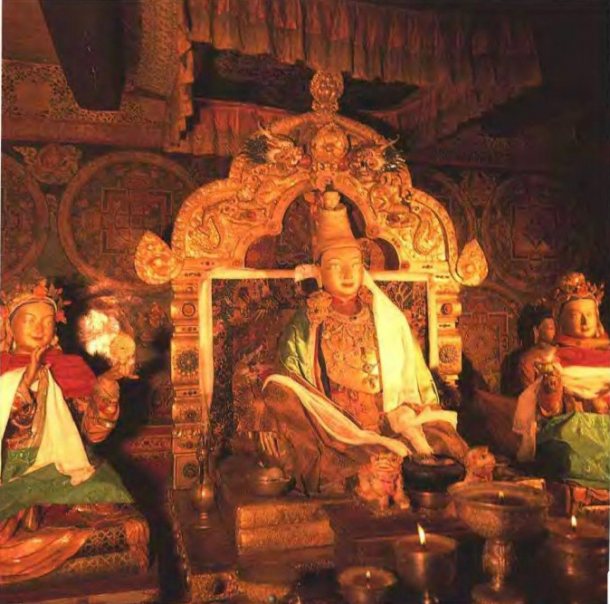Princess Wangchen-Gyasa-Tibet.

Wangchen Gonzhu was a member of a minor branch of the royal clan of the Chinese Tang dynasty and in 641 emperor Taizong of tang dynasty grant her daughter wangchen to the great king (Songtsen Gampo) of Tibet for marriage and she is popularly known as Gyasa for her designation as princess in Tibet. Ever after that the relationship has been so enriched between Tibetan and Han people.Tibetans believe that it was Songtsän Gampo who promoted Tibet’s technical and social progress by establishing his capital at Lhasa and building the powerful Tibetan Empire, and whose main building strategy was purposely to seek ways to introduce new cultures into his kingdom. Tibetan sources credit her for introducing Buddhism to Tibet. The Nepalese and the Chinese Princesses were devoted Buddhists, zealously competing to build temples and monasteries. They were to be deified later as incarnations of the goddess Tara, green Tara for Nepalese and white Tara for Chinese. Each one had brought a statue of Buddha as part of their dowry. In the new town of Lhasa, a large temple was built, the Jokhang, to shelter the statue of the 12 years old Buddha in solid gold which had arrived with the Chinese Princess. Princess Wencheng lived in Tubo for 40 years, making great contributions to the friendship between the Han and Tibetan peoples. She is still remembered and loved by the Tibetans. Statues of Princess Wencheng are preserved in the Jokhang Temple and Potala Palace.
Recent Posts
Exploring the Beauty of Tibetan Handicraft
The Ultimate Guide to Tibet Tours, Travel, and Trekking Adventures
How to Explore Tibetan Culture
All Categories
- About Tibet
- book a Tibet tour
- Buddhism Practice
- Budget Tour
- China-Tibet Train
- Customized Tibet tour
- Historical Sites
- Hot Springs in Tibet
- News
- Photography in Tibet
- Tibet attraction
- Tibet Group Visa
- Tibet Motorcycle Tour
- Tibet Small Group Tours
- Tibet Tours and Tibetan Tour Guide
- Tibet Train
- Tibet Travel FAQs
- Tibet Travel Information
- Tibet Travel News
- Tibet Travel Permit Update
- Tibet Travel Prices Rises
- Tibet Trek
- Tibet Trekking Tour
- Tibet weather and climate
- Tibet Wildlife animals
- Tibet Winter Tour
- Tibetan Buddhism
- Tibetan Cultural Features
- Tibetan Culture and Poeple
- Tibetan Festivals
- What to see in Tibet



